A Photo Essay from one of London’s Historical Graveyards
Apparently, if you like visiting graveyards, and we do, then you are known as a ‘tombstone tourist’. I like the expression and personally, I don’t think there is anything macabre about visiting cemeteries. On the contrary, both Kirsty and I find them absorbing places and when we do visit one, we often end up spending several hours wandering around, admiring the tombstones and reading the inscriptions on them. Although neither of us is religious (*), there is something incredibly de-stressing about strolling around an old, overgrown and ramshackle graveyard and when there is one in the vicinity of wherever we happen to be, we take the opportunity to visit.
(*) Well, I’m definitely not religious, putting myself firmly in the atheist camp but Kirsty being Kirsty, reserves a bit more judgement on the matter.
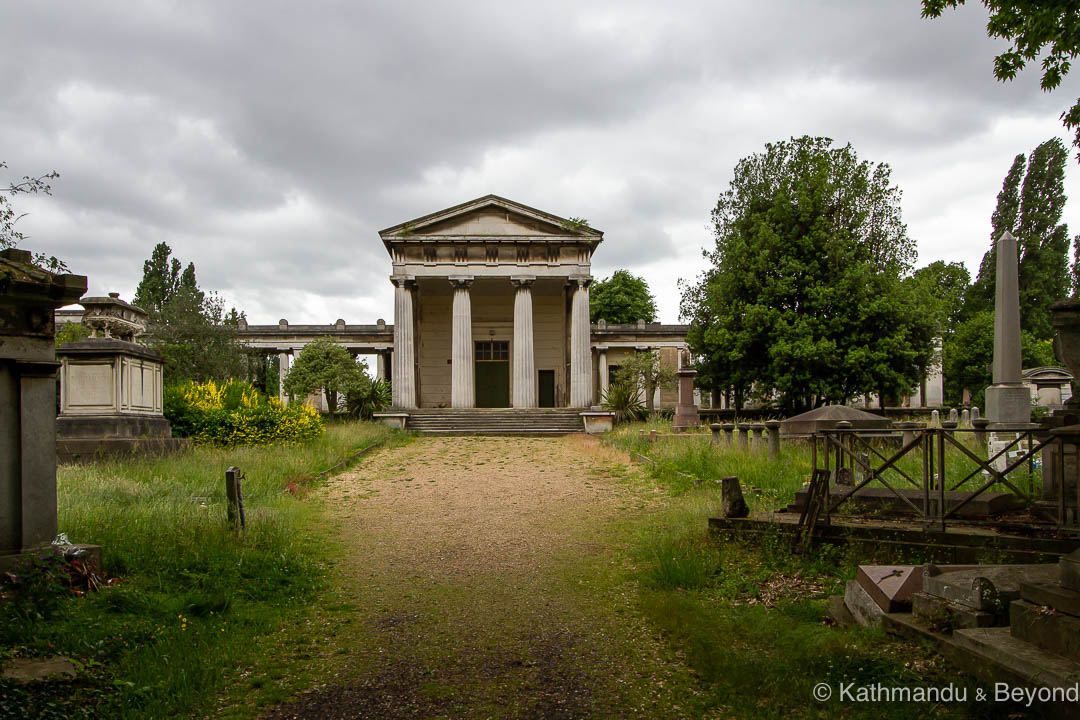 Kensal Green Cemetery (Anglican Chapel)
Kensal Green Cemetery (Anglican Chapel)
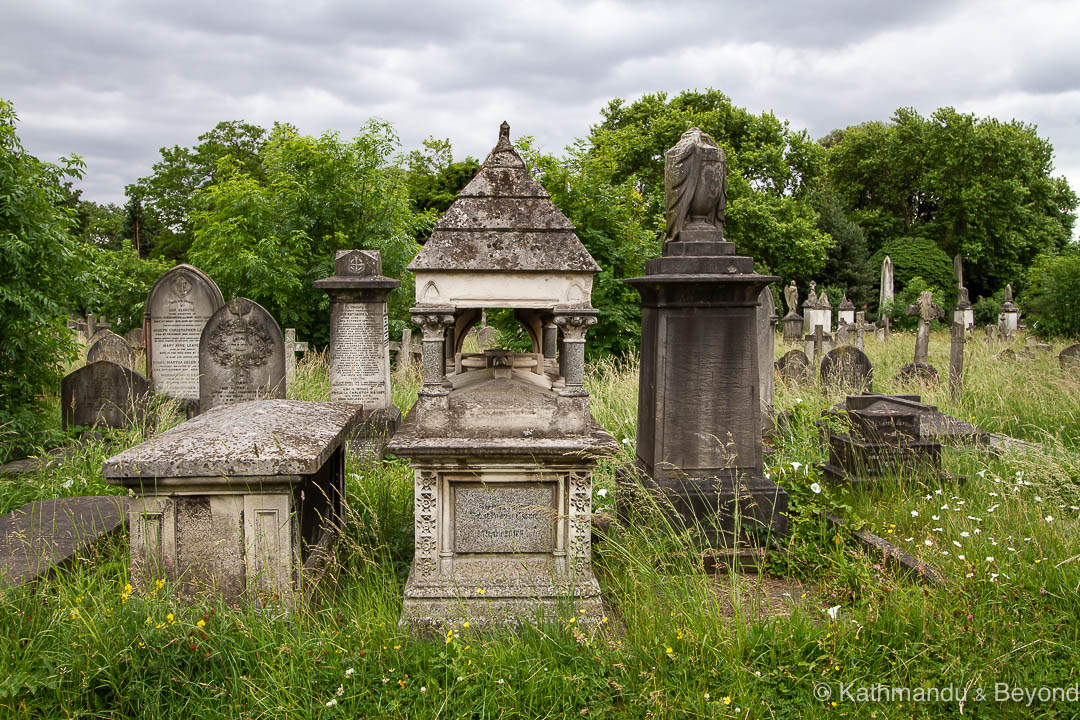 Kensal Green Cemetery
Kensal Green Cemetery
Kensal Green Cemetery in west London is the oldest of a group of historic cemeteries in London, known informally as the ‘Magnificent Seven’. These particular cemeteries date back to the 19th century (*) and were established at a time when parish church graveyards were dangerously overflowing to bursting point. Hygiene and fear of spreading lethal epidemics such as cholera were pragmatic reasons for their initial creation but there was also a sense of wanting to design a peaceful, garden-like environment that moved away from the doom and gloom associated with death up until that point.
(*) The idea of suburban graveyards actually dates back further to the 1700s, when prominent architects such as Sir Christopher Wren championed the cause but nothing was done until Victorian times.
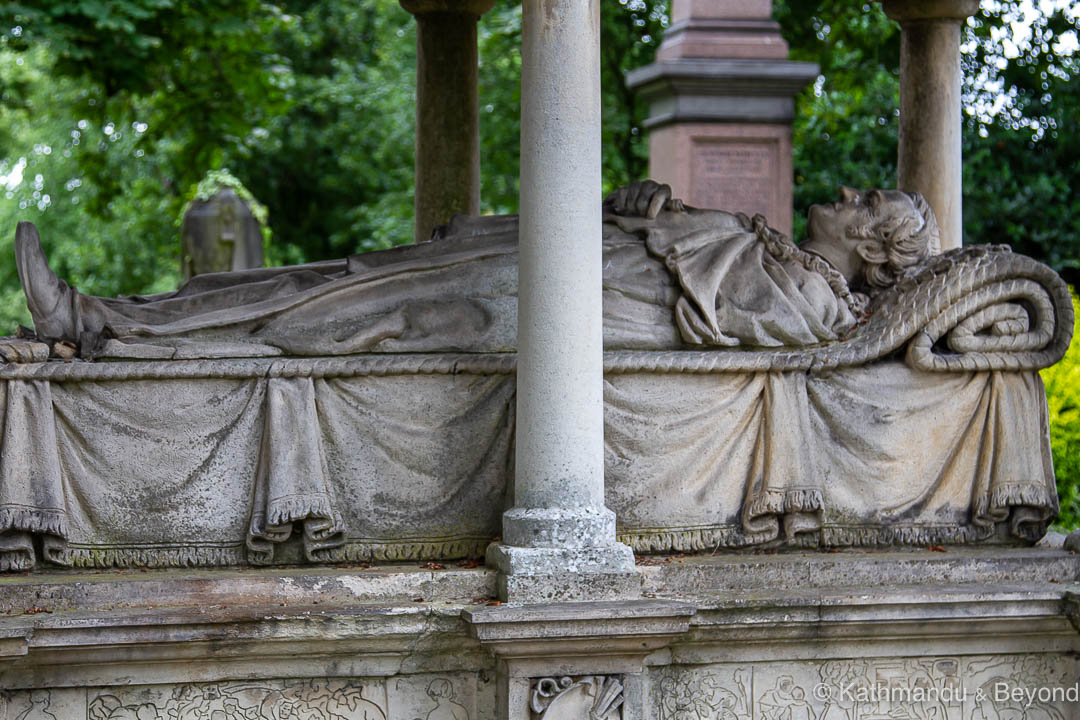
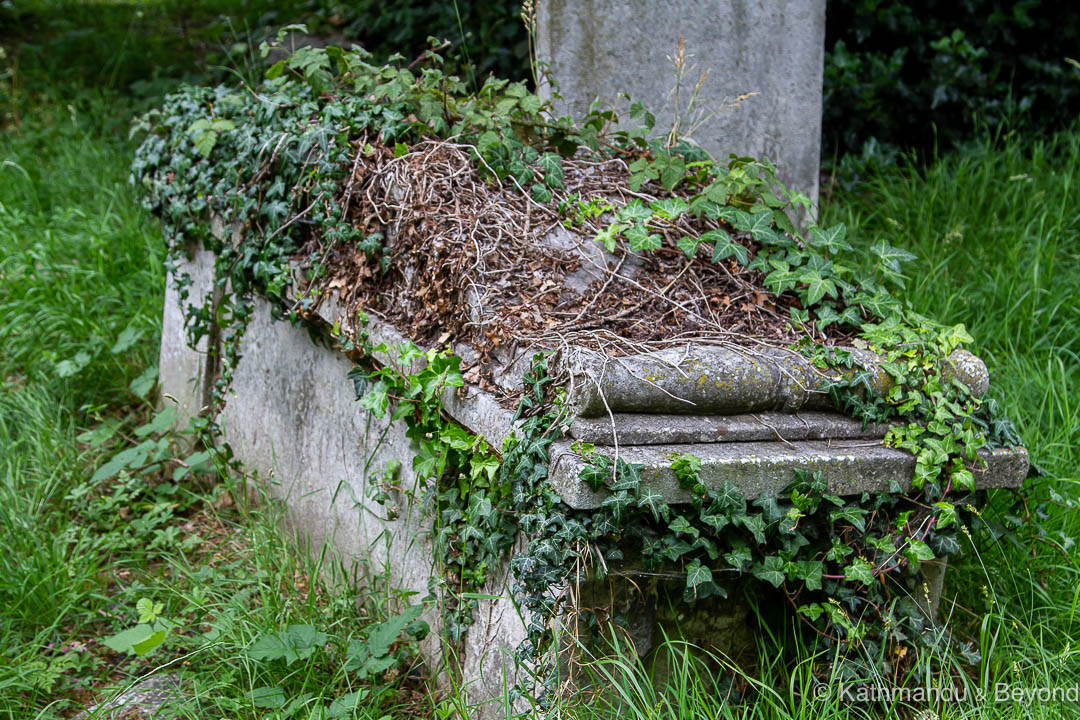
Kensal Green Cemetery
What’s more, because of their locations (all were on the outskirts of London back then), this new style of graveyard provided enough space for the families of the rich and famous to build tombs and gravestones worthy of the dead relatives’ status in society. Skull and crossbones and other traditional representations of death were replaced with archangels, animals, pagan symbols and flamboyant, almost over the top, designs that gave the impression of celebrating life rather than mourning it. Adding the fact that, because these burial grounds were privately owned, there was no restriction on which religious faiths could be laid to rest in them and this resulted in an even more eclectic mix of styles and designs.
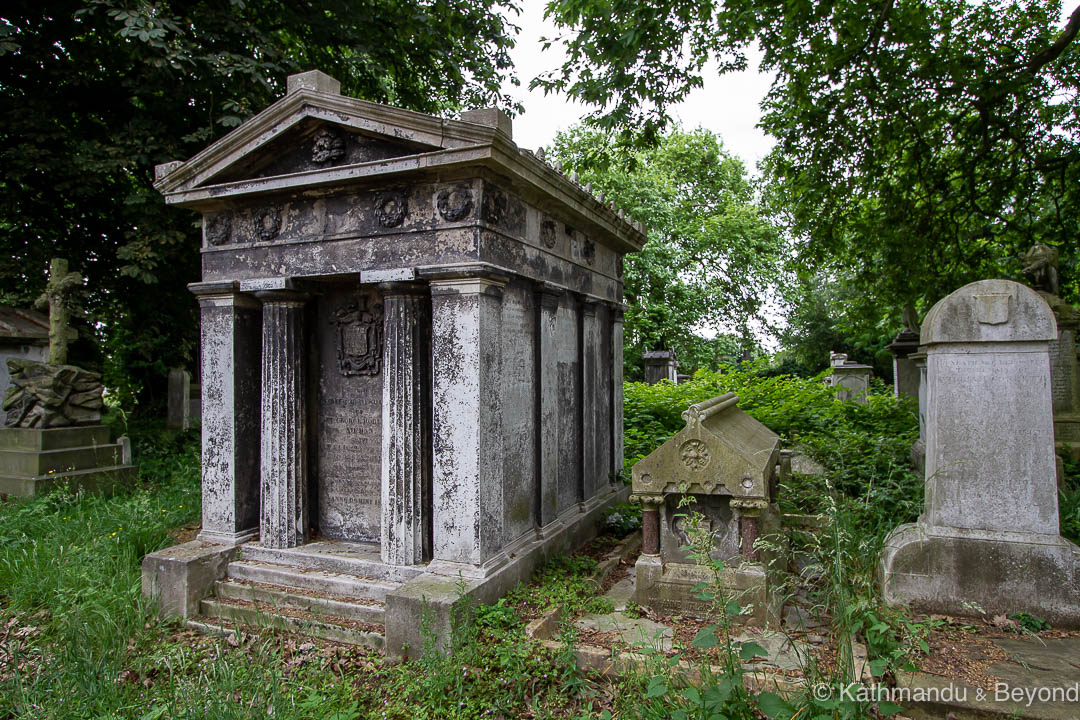 Kensal Green Cemetery
Kensal Green Cemetery
By the mid-1800s, Kensal Green, in particular, was the most desirable place in the country, if not the entire British Empire, to be buried and a good number of artists and sculptors made their name designing lavish mausoleums and memorials during this period.
With plenty of green space and a general air of pleasantness, these park-like graveyards also became popular with living Victorians, who would visit them on day trips out of the city in order to take the air and undertake a spot of sightseeing of their own. Gravelled footpaths (wide enough to accommodate a horse-drawn carriage) and plenty of benches on which to sit encouraged a leisurely day out, with celebrity graveyard-spotting being especially popular. Technically then, you could argue that the Victorians were, in fact, the first ‘tombstone tourists’!
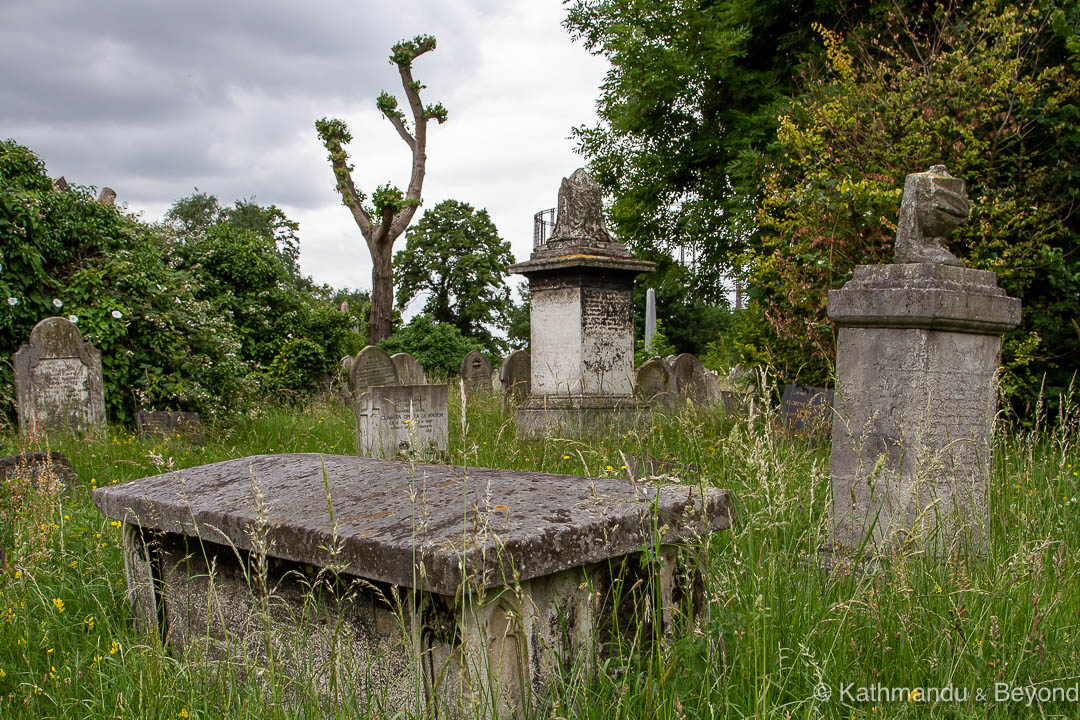 Kensal Green Cemetery
Kensal Green Cemetery
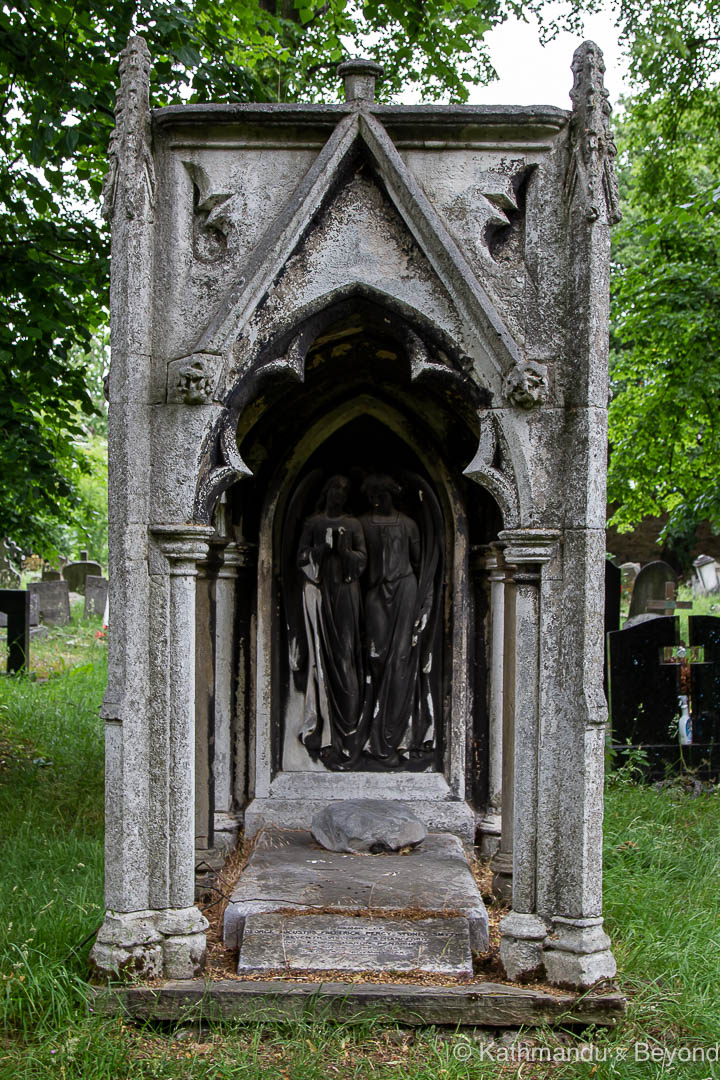
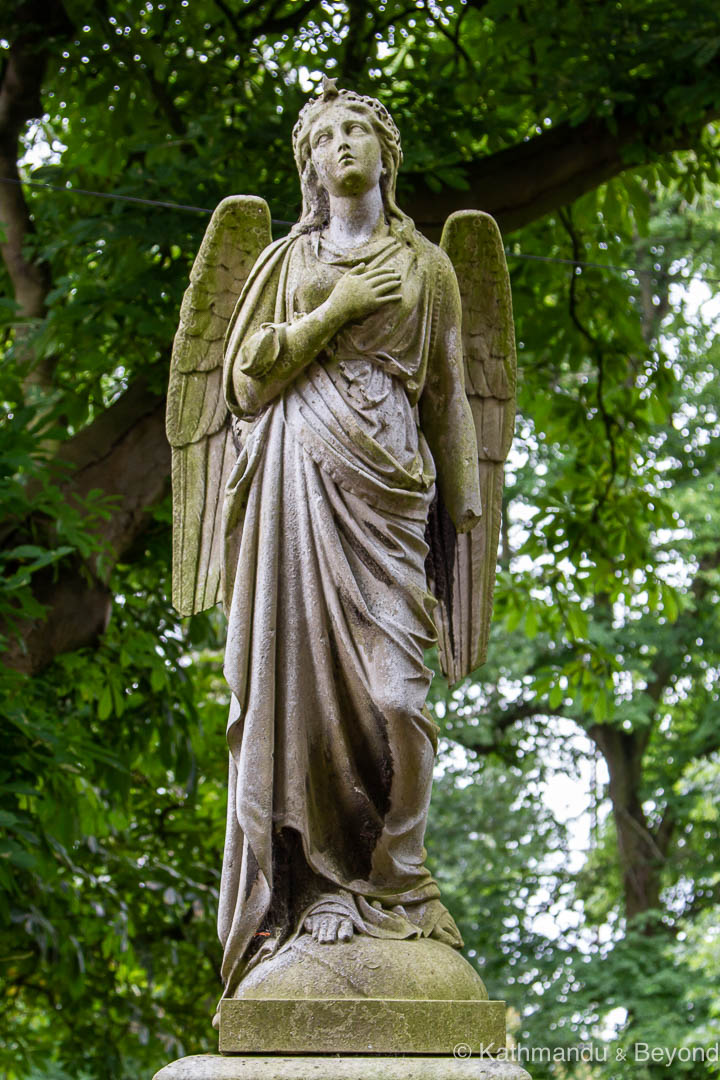
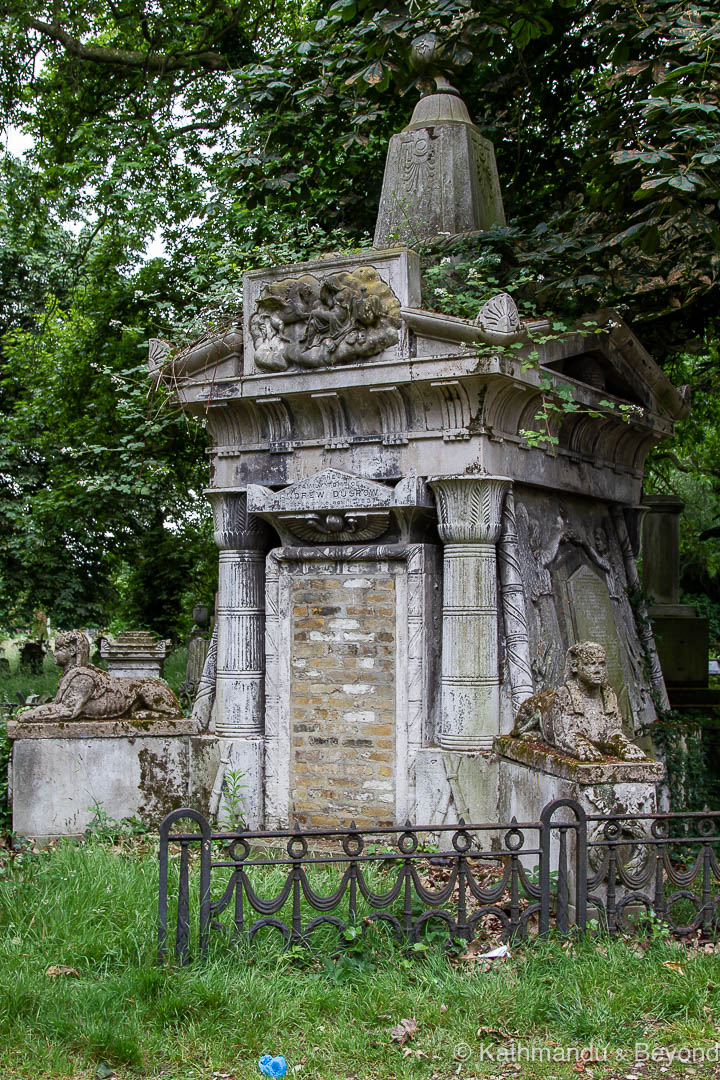
Kensal Green Cemetery (Andrew Ducrow’s mausoleum (right))
The decline in popularity of such cemeteries (and in particular the creation of lavish headstones and mausoleums) began during World War I, when there was an urgent need to craft far more simple plaques in order to efficiently bury the huge number of dead that were being returned from the battlefields of the Western Front and beyond. Their decline was further compounded by the increasing popularity of cremation as an alternative to conventional burial.
As for Kensal Green Cemetery itself, it was inspired by the Père Lachaise Cemetery in Paris and founded by the English barrister and businessman George Frederick Carden, who is widely credited with the development of this style of park-like cemetery. Kensal Green opened in 1833 and was the first commercial cemetery in the capital.
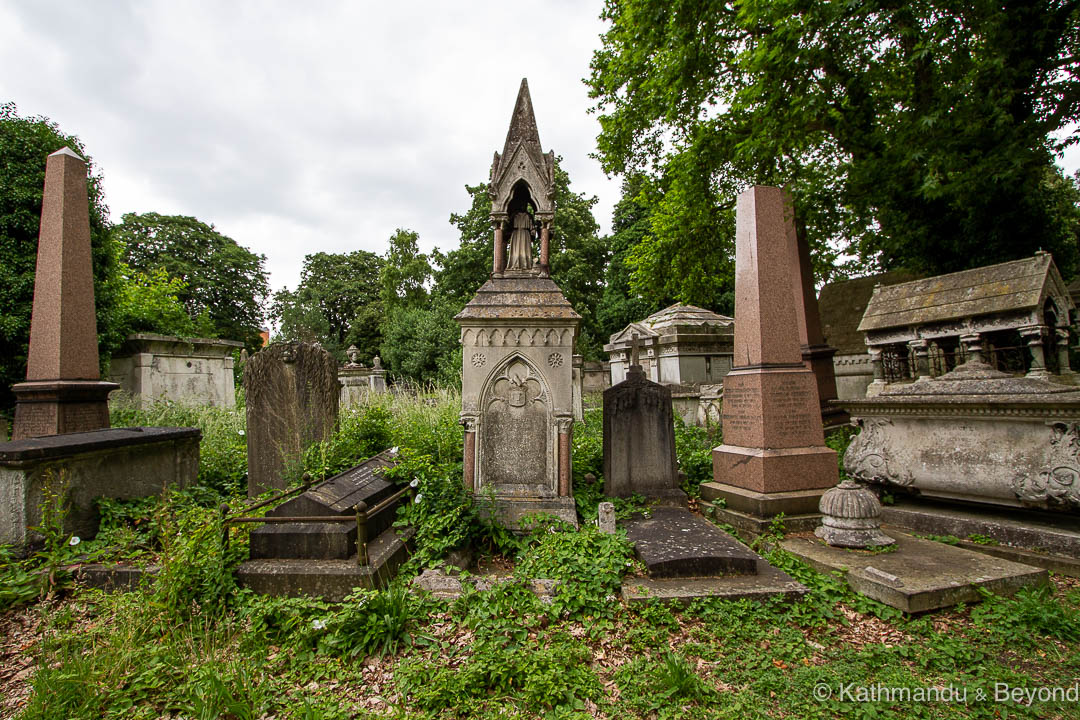 Kensal Green Cemetery
Kensal Green Cemetery
We visited on a suitably dark and miserable day (even though it was summer – that’s English weather for you!) and entered via the main entrance on Harrow Road (not the Top Gate mentioned below, which is also on Harrow Road). We first made our way to the Dissenters’ Chapel in the eastern corner of the grounds were, poking around the back of the chapel, we found what appeared to be a Thai-style Spirit House. As for the Dissenters’ Chapel itself, it was originally constructed for non-Anglicans i.e. those who disagreed with the teachings of the Anglican church and was the first of its kind to be built in a public cemetery.
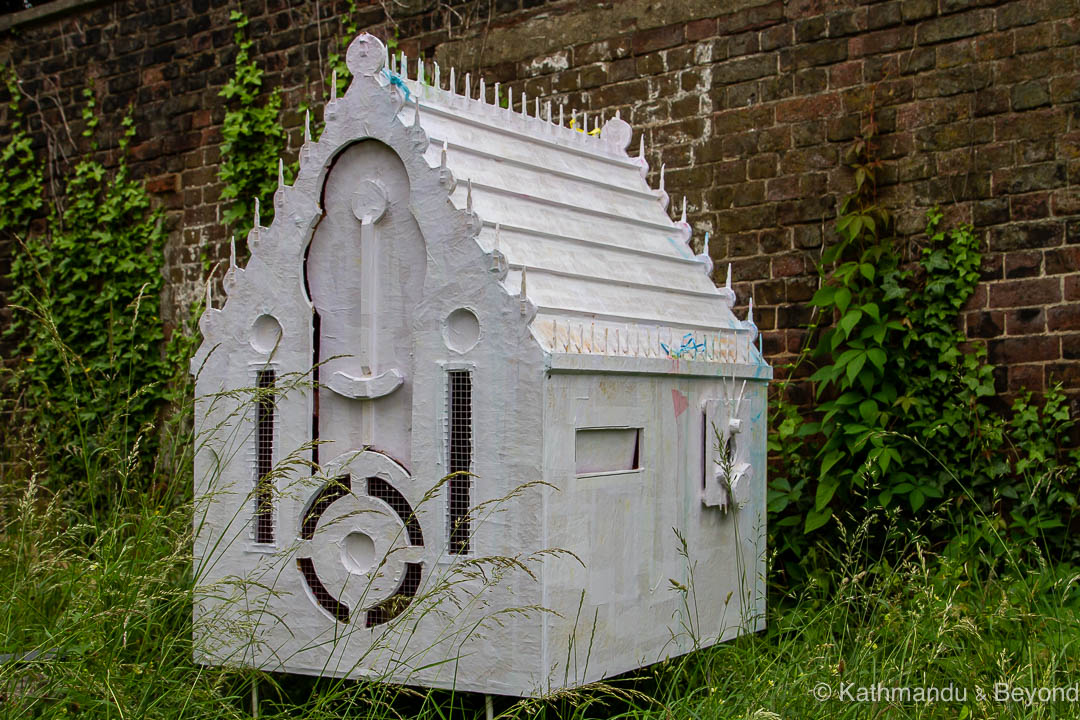 Kensal Green Cemetery (Thai-style Spirit House behind the Dissenters’ Chapel)
Kensal Green Cemetery (Thai-style Spirit House behind the Dissenters’ Chapel)
From there we ambled in a westerly direction past overgrown graves and modest headstones to the cemetery’s main east-west axis. This was undoubtedly the most interesting part of the graveyard for us and it was in this area that we found many ornate graves and monuments. We spent ages in this part of the cemetery. You are free to wander off the main avenue and delve into the undergrowth but it’s disrespectful (and probably bad karma) to walk over the graves so avoid doing that if you can.
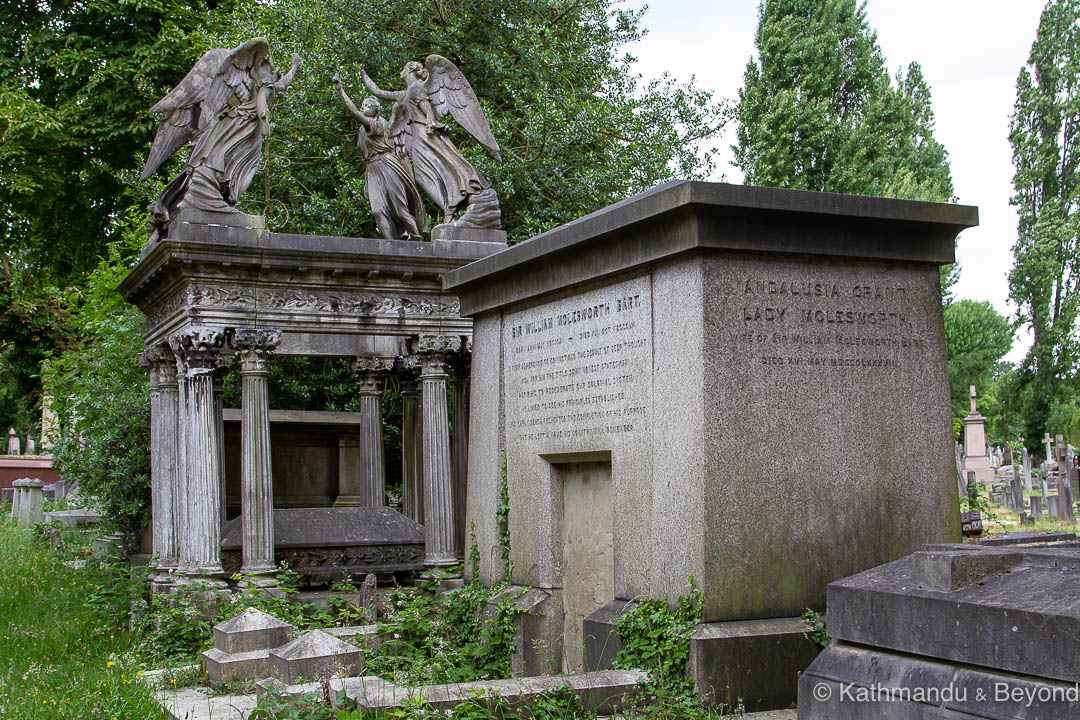 Kensal Green Cemetery (main east-west axis)
Kensal Green Cemetery (main east-west axis)
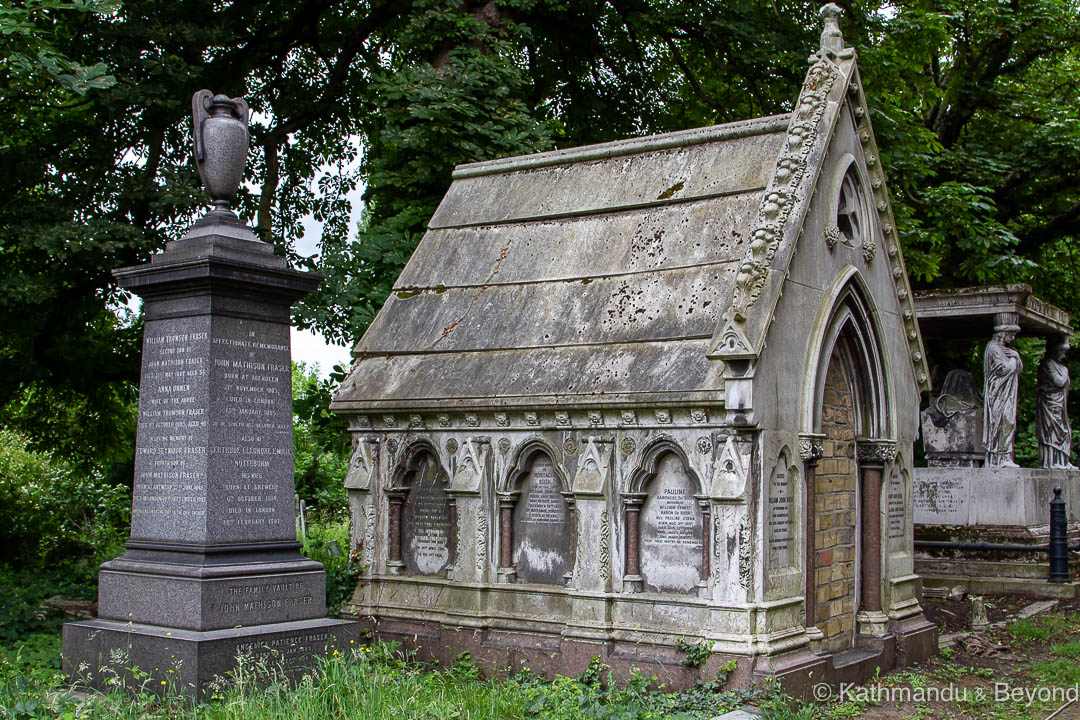 Kensal Green Cemetery (main east-west axis)
Kensal Green Cemetery (main east-west axis)
There are quite a few famous people buried in Kensal Green Cemetery. On this occasion, we didn’t do a great deal of research before our visit so we weren’t sure who was buried there whom we might have heard of and the location of their graves but we did come across that of the engineer Isambard Kingdom Brunel (1806 – 1859), who was buried along with the rest of his family in a rather plain-looking grave. We also saw the atmospheric mausoleum (complete with three very art nouveau looking sphinx) of Andrew Ducrow (1793 – 1842), a famous circus performer of the time known as the ‘Father of British circus equestrianism’. His burial chamber is one of the largest within the cemetery and was apparently brightly painted in pastel colours when first created. There is a long list of notable people who are buried at Kensal Green Cemetery on the cemetery’s own website. Most date back to the mid 19th and early 20th centuries but one interesting name on the list (who’s grave we didn’t see) is that of the British playwright, Harold Pinter who had a secular ceremony and was buried there in 2008.
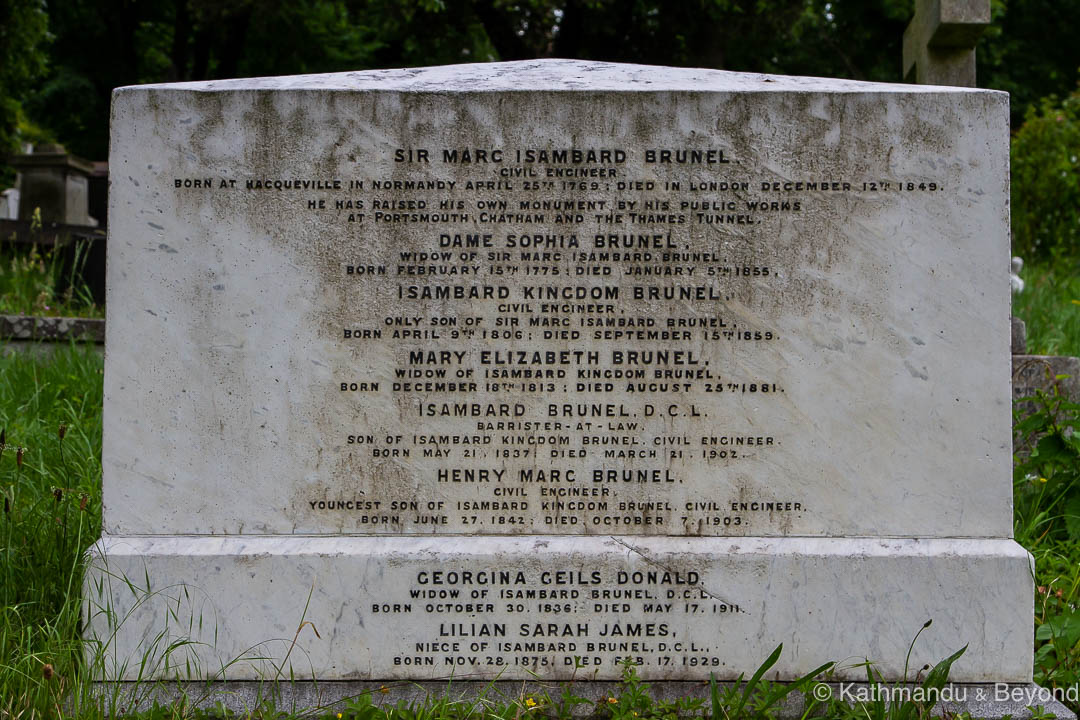 Kensal Green Cemetery (Brunel family mausoleum)
Kensal Green Cemetery (Brunel family mausoleum)
We kept going along the main thoroughfare until we reached the rather ominous-looking Anglican Chapel and catacombs. There are few more interesting graves a little further west of the chapel but soon thereafter we ended up in the modern part of the cemetery and the crematorium, which was less interesting for us so we decided to call it a day. We left via the nearby West Gate entrance.
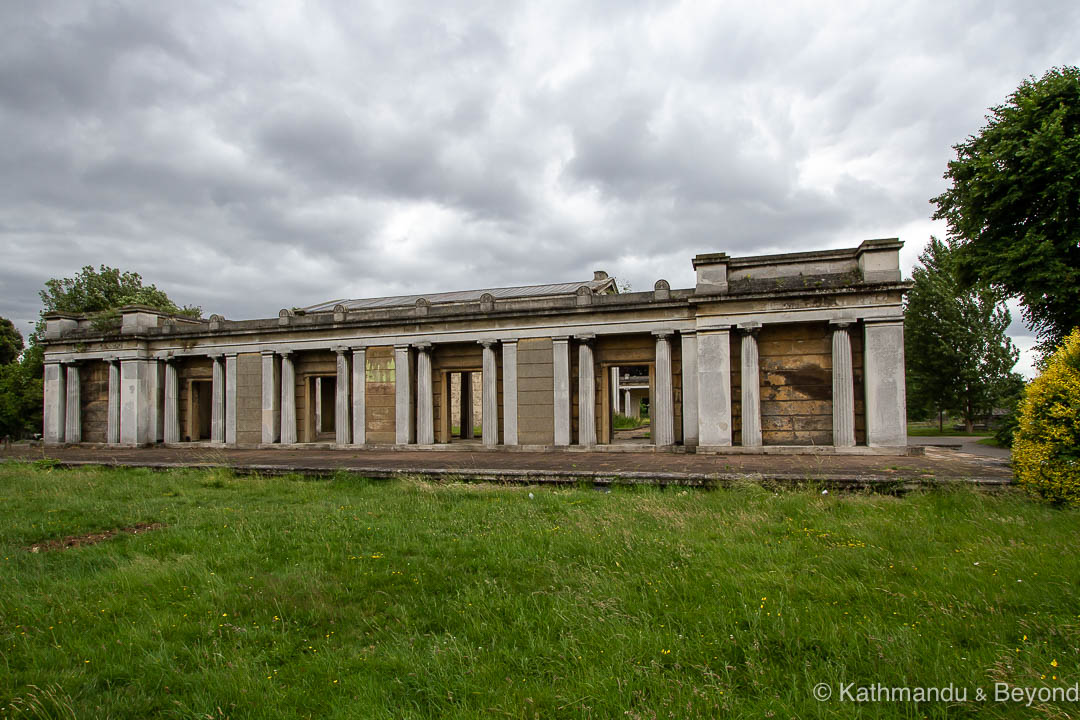 Kensal Green Cemetery (Anglican Chapel)
Kensal Green Cemetery (Anglican Chapel)
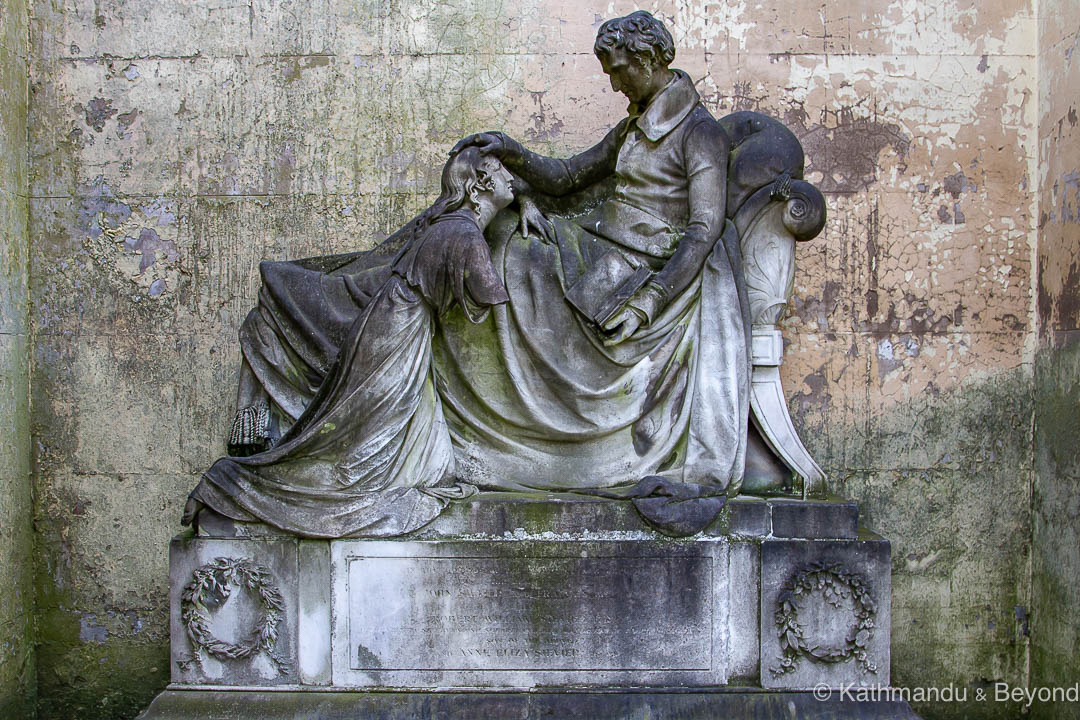 Kensal Green Cemetery (Anglican Chapel)
Kensal Green Cemetery (Anglican Chapel)
The other six cemeteries that comprise the ‘Magnificent Seven’ are West Norwood (South London), Abney Park (Stoke Newington/Northwest London), Nunhead (South London), Brompton (West London), Tower Hamlets (East End of London) and Highgate (North London), of which the latter is the most famous.
The term ‘Magnificent Seven’ to describe the cemeteries collectively is derived from the famous western movie of the same name (whose cast includes Steve McQueen, Yul Brynner and Charles Bronson). The expression was coined by the architectural historian Hugh Meller, who wrote a book called London Cemeteries: An Illustrated Guide and Gazetteer. I haven’t read the book, but apparently, he describes Kensal Green as being ‘the most distinguished’ of the seven cemeteries and so I’m assuming he gave each one a distinctive characteristic in the same way each of the seven cowboys in the film also has a distinctive character.
Visiting Kensal Green Cemetery
Situated in the Royal Borough of Kensington and Chelsea and bordered by Harrow Road to the north and the Grand Union Canal to the south, Kensal Green Cemetery covers a large area (72 acres (291,000 square metres)) (*) but it is only really the eastern half of the grounds, up to and a little beyond the Anglican Chapel/catacombs, that is of real interest. This is the ramshackle and overgrown part of the cemetery where you will find the most interesting and impressive tombstones and mausoleums. Much of the western section of the cemetery is given over to recent burials and is still in use as a crematorium.
(*) The original size of the cemetery was 55 acres.
Unless you really want to see everything (and assuming you have arrived via London Underground), a good plan is to enter through the Top Gate on Harrow Road, walk in a loop through the eastern part of the grounds via the Dissenters’ Chapel and exit through the West Gate entrance, which is close to the junction of Greyhound Road.
The nearest London Underground tube station is Kensal Green on the Bakerloo Line. There are other ways of getting to the cemetery and you will find more information on the cemetery’s official website.
Kensal Green Cemetery Opening times:
April through to September: Monday to Saturday 9am to 6pm and Sunday 10am to 6pm
October to March: Monday to Saturday 9am to 5pm and Sunday 10am to 5pm
Bank Holidays: 10am to 1.30pm
Last admission is 30 minutes prior to closing time.
Recommended duration of visit
We would recommend allowing at least 2 hours for a comprehensive visit of the eastern half of the cemetery and longer if you want to see the entire grounds. It is best to be discrete if you do venture into the modern part of the cemetery or get close to the crematorium.
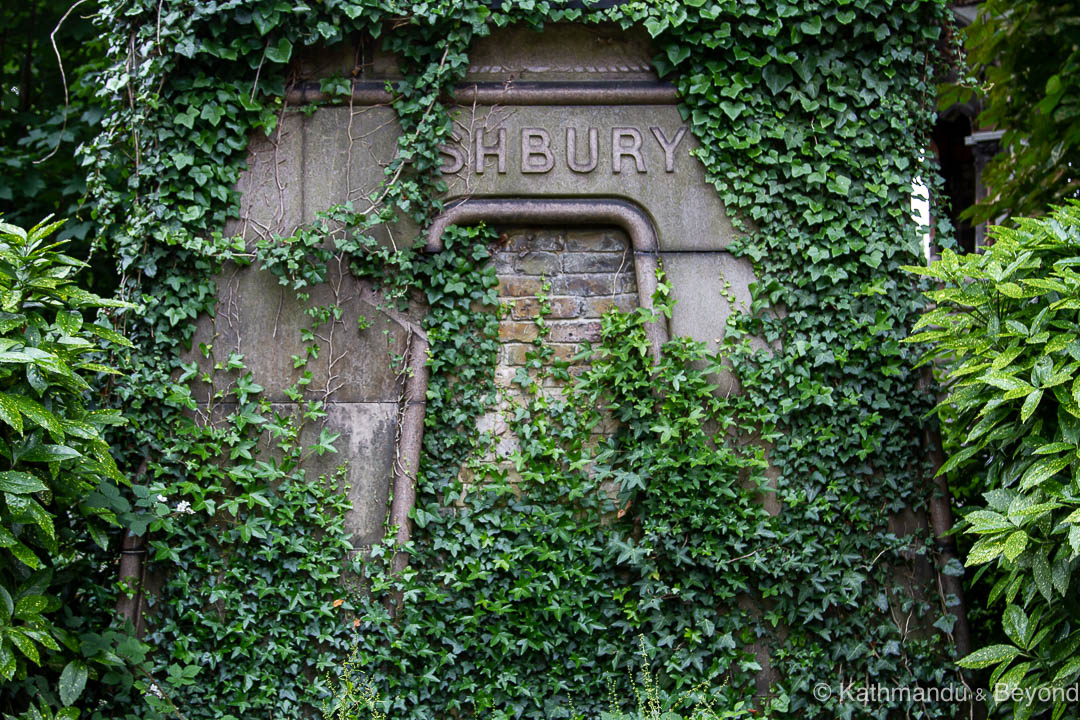 Kensal Green Cemetery
Kensal Green Cemetery
Special tours of Kensal Green Cemetery
The Friends of Kensal Green offer a two-hour guided tour of the cemetery every Sunday at 2pm from March to October and the first and third Sunday from November to February. The tour costs £7 per person.
According to their website, the catacombs are currently closed to visitors and not part of the tour but equally, the tour information posted at the actual cemetery is different from that on their website so it would be a good idea to call or message them for up to date information if you want to take a guided tour
Is it worth visiting Kensal Green Cemetery?
If you are a ‘tombstone tourist’ then definitely. And even if you are not, Kensal Green Cemetery (well, any cemetery really) offers a peaceful respite from the hustle and bustle if you are in the capital for any amount of time. Kensal Green is the first of the ‘Magnificent Seven’ that we have visited. We do intend to visit the other six cemeteries listed above but our personal ‘list’ of things we want to see and do in London is extremely long and we don’t spend that much time in the capital these days. But I’m sure we will get around to it one day and then eventually, who knows, we may even write parts II through to VIII of this cemetery-based series…
READ MORE BLOG POSTS FEATURING ENGLAND
DID YOU ENJOY THIS POST ABOUT KENSAL GREEN CEMETERY? ARE YOU A TOMBSTONE TOURIST? PLEASE SHARE IT OR PIN IT…
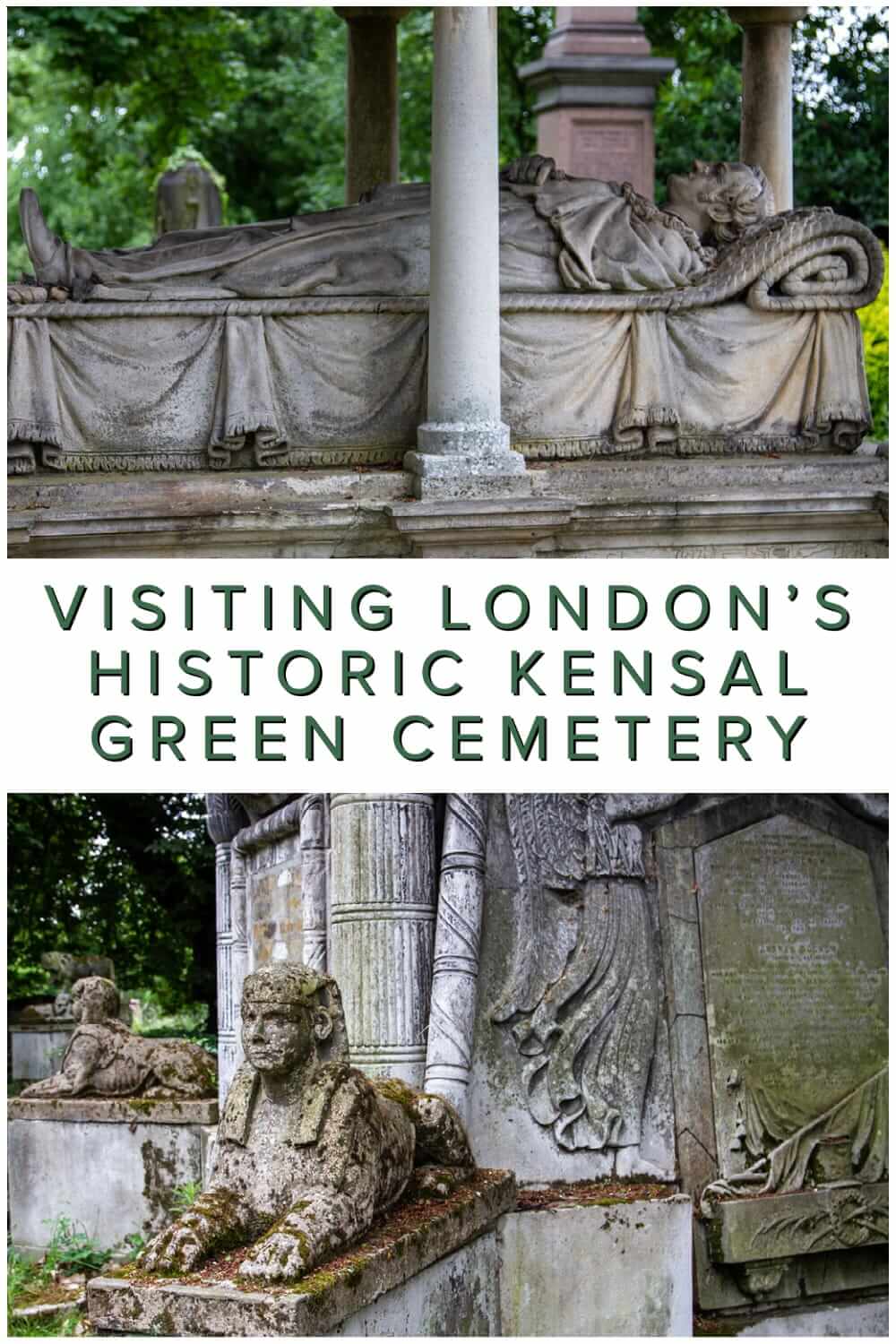
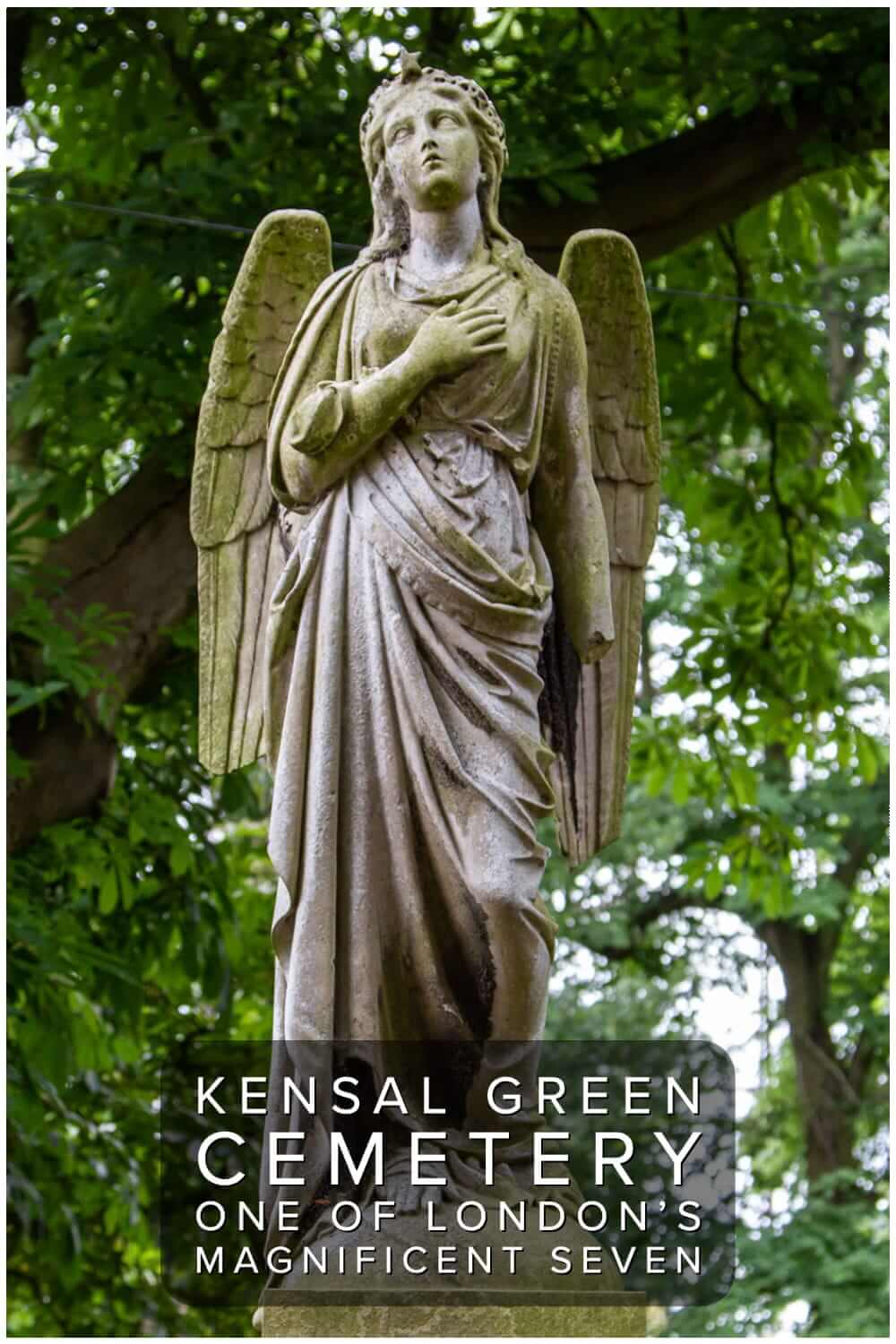
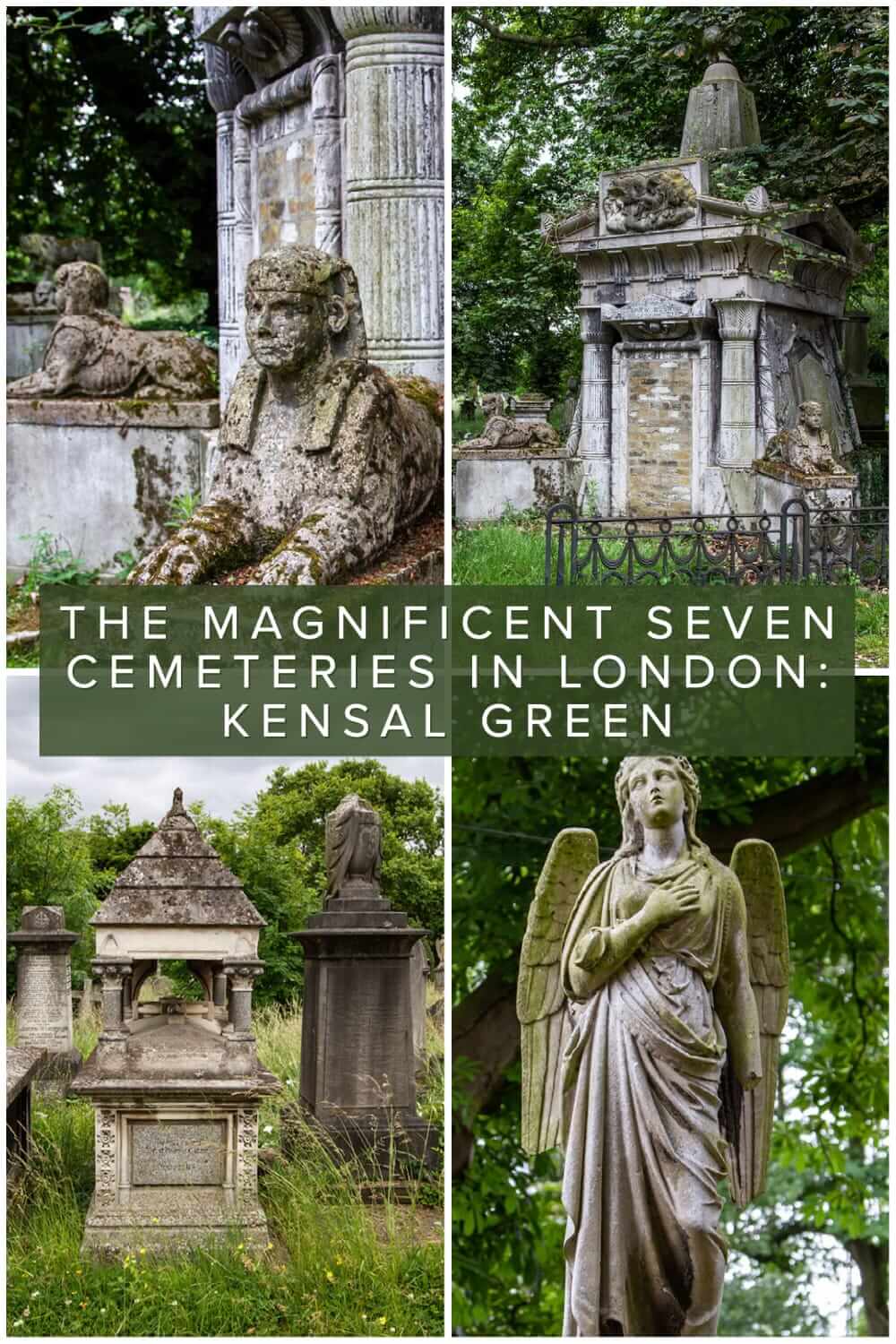

Beautiful photos and spooky story. Old cemeteries like this are almost like libraries, I think. Too many stories to ever keep up with (but it’s fun to try). My family and I just got our visa approved with the help of and now we we’re just waiting for our travel time to visit London so we will probably take a glimpse to this place. Thanks for sharing this!